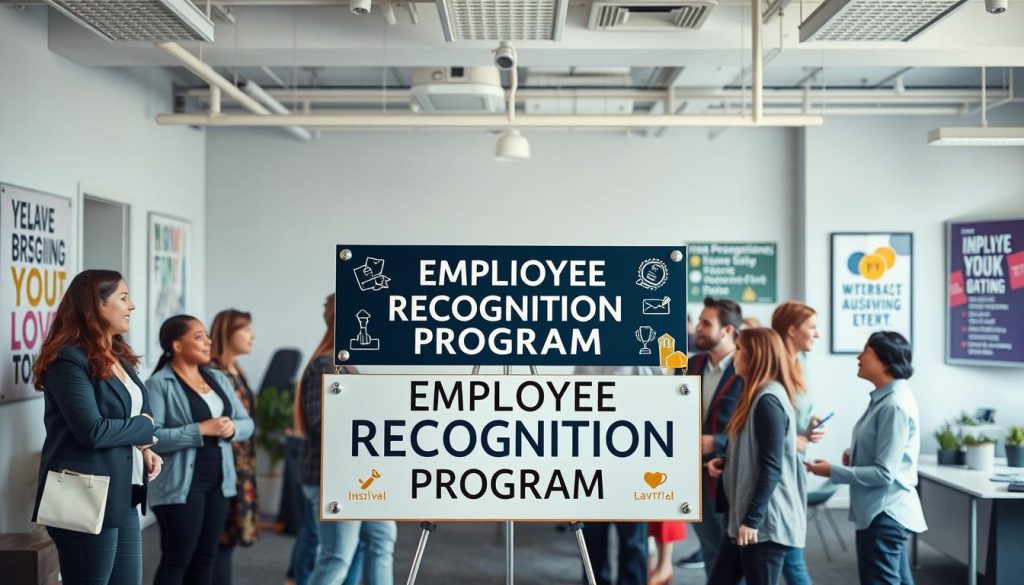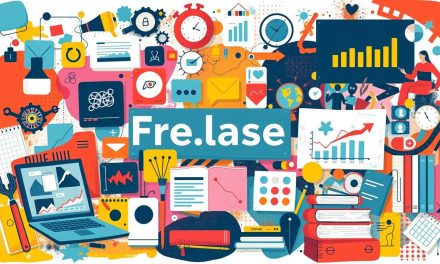Recognition is not just a perk — it is a strategic lever that lifts morale, performance, and retention.
When employees feel seen, they are more likely to innovate and stay. Data shows well-recognized employees are less likely to leave and more likely to go the extra mile.
Meaningful appreciation connects daily tasks to the company mission. That link boosts team cohesion and aligns people with business goals.
This introduction previews a practical how-to: define types of praise, align programs with goals, set fair rules, pick the right channels, and measure results.
Leaders and peers both widen opportunities for praise. When acknowledgment is consistent, teams build trust and pride in their contributions.
Table of Contents
Key Takeaways
- Recognition drives measurable gains in engagement and performance.
- Fair, timely appreciation motivates employees to do more.
- Embed acknowledgment in daily routines for lasting culture change.
- Use both leader and peer praise to broaden impact.
- Track results to link praise to retention, innovation, and revenue.
Why Work Recognition Matters Now
Today, timely praise is a strategic tool that keeps people engaged and helps teams perform.
Linking appreciation to retention, productivity, and morale
When employees feel valued, turnover drops. Recognized employees are 45% less likely to leave after two years and 47% less likely to be job hunting.
Recognition also raises productivity. Engagement climbs 3.7x when praise is part of company culture, which reduces costly unproductive hours and improves results.
How recognition fuels trust and employee engagement
Trust grows when managers and leadership thank people consistently. A simple manager “thank you” can lift extra-effort likelihood by 69%.
Inclusive appreciation matters: when everyone can be recognized, employees are 56% more likely to give extra effort and are 2.0x more likely to go above and beyond.
| Outcome | Impact | Typical Benefit |
|---|---|---|
| Retention | 45% less likely to leave | Lower hiring costs, stable teams |
| Innovation | 2.2x more likely to innovate | Faster product and process gains |
| Productivity | Engagement rises 3.7x | Reduced unproductive labor, better performance |
| Fairness | 2.6x more likely to view promotions as fair | Stronger morale and clearer career paths |
Defining Recognition: Formal, Informal, and Peer Recognition
Not all appreciation is the same; defining types helps leaders use the right approach at the right time.

Formal recognition: awards, bonuses, milestones
Formal programs institutionalize appreciation with quarterly awards, annual bonuses, and service anniversaries. These events signal that the company values long-term contribution.
Big examples include loyalty celebrations like SheetzFEST, where hosted resort stays reward tenure and build identity.
Informal recognition: timely thank-yous and shout-outs
Informal praise is immediate and simple: a one-on-one thank-you, an intranet post, or a short written note. Timely messages boost morale and lift performance right after a win.
Peer recognition: widening opportunities to celebrate contributions
Peer systems democratize appreciation. Tools such as Sedgwick’s “Props” and Atlassian’s Kudos scale peer recognition—Atlassian logged nearly 56,000 kudos in a year.
These platforms help employees who are less visible get noticed and encourage positive behaviors across the team.
| Type | Timing | Example / Benefit |
|---|---|---|
| Formal | Planned (quarterly/annual) | Bonuses, SheetzFEST — signals strategic value |
| Informal | Real-time | 1:1 thank-yous — immediate morale boost |
| Peer | Ongoing | Props, Kudos — wider coverage, inclusive praise |
Align Recognition With Company Values and Goals
Mapping everyday actions to company goals turns simple thanks into strategic guidance.
Translate core values into clear criteria so employees know which behaviors matter. Use short, specific phrases like “proactive risk reporting” or “customer handoff excellence.”strong
Linking praise to business objectives helps teams prioritize safety, sustainability, customer experience, or innovation. Data shows employees who feel recognized are 2.6x more likely to view promotions as fair and 2.2x more likely to drive innovation.
Practical steps
- Define micro-criteria per department so each person can act toward company goals.
- Tag nominations with the relevant value to build a searchable example library.
- Encourage peer nominations so people spot everyday wins across functions.
- Review criteria regularly to keep alignment with strategy and fairness.
Use Wegmans as a model: celebrate less-visible wins like recycling rates and food safety to show values in practice. Programs like Ally Financial’s “I am an Ally” invite nominations across customers and teams to tie appreciation to purpose.
For implementation ideas and further reading, see our guide on employee recognition.
How to Build an Employee Recognition Program
Begin with a simple survey to learn which moments make employees feel truly appreciated.
Assess culture, gaps, and preferences.
Start with a baseline assessment: ask employees about public versus private praise, ideal frequency, and the moments that matter most. Use short pulse surveys and focus groups to spot patterns.

Set clear criteria, timing, and fair processes
Define value-aligned criteria and timing rules: real-time for quick wins; monthly or quarterly for larger milestones. Publish guidelines so everyone understands how nominations and awards work.
Balance public and private praise
Let employees choose public shout-outs or private notes. That small choice makes appreciation land better.
Scale without unhealthy competition
Avoid spotlighting only one winner. Celebrate multiple contributors and teams to reward collaboration. Use tools like Hilton’s Recognition Calendar for daily, low-cost ideas and Crowe’s Pay It Forward to credit behind-the-scenes contributors.
| Step | Action | Benefit |
|---|---|---|
| Assess | Pulse survey + focus groups | Clear preference data |
| Criteria | Value-linked, timed rules | Consistent fairness |
| Process | Open nominations, rotating panels | Bias reduction |
| Cadence | Mix micro and milestone rewards | Authentic, sustainable praise |
Make Work Recognition Timely, Specific, and Personal
Acknowledging effort immediately makes the link between action and impact clear.
Fast, specific praise helps employees see which behaviors matter and why. Delays dilute authenticity and reduce the chance that a behavior will be repeated.
Strike while the iron is hot: real-time acknowledgments
Send praise as close to the moment of contribution as possible so the team links cause and effect. Quick notes boost morale and reinforce desired habits.
Managers who thank contributors promptly can raise the odds of extra effort by about 69%.
Personalization by appreciation “language” and role
Tailor the format to the person: public shout-outs for those who like visibility, private notes for those who prefer quiet praise.
- Be specific: name the behavior, the impact, and the value advanced.
- Document each employee’s preferred appreciation style so peers and leaders can match it.
- Adapt by role: client-facing teams may want public client shout-outs; engineers often value detailed write-ups.
- Use quick templates for real-time kudos to keep speed without sounding generic.
Track engagement with different approaches and let data guide personalization. Timely, specific, and personal appreciation makes employees more likely to innovate and go above and beyond.
Channels and Tools to Recognize Employees

Intranet hubs and digital recognition boards
Create a central hub with a digital wall of fame, searchable tags, and peer kudos. This transforms scattered shout-outs into a living archive of achievements.
Mobile apps for on-the-go engagement
Use a mobile app to send push alerts for promotions, awards, and peer shout-outs. That keeps frontline and remote employees connected in real time.
Targeted newsletters and leadership spotlights
Send short newsletters that highlight milestones, photos, and quotes. Pin major posts like Employee of the Month so priority items cut through busy feeds.
Hybrid visibility for frontline and remote teams
Provide inclusive access with mobile-first tools and simple peer submission forms. Balance public recognition boards with private messages so personal preferences are respected.
- Interactive features—likes, comments, reactions—help amplify appreciation and build community.
- Use analytics to track open rates, reactions, and reach, then refine timing and content.
- Set editorial rules so posts stay specific, respectful, and aligned to company values.
| Channel | Key Features | Primary Benefit |
|---|---|---|
| Intranet hub | Wall of fame, tags, peer kudos | Centralized, searchable employee stories |
| Mobile app | Push alerts, instant kudos | Real-time visibility for all shifts |
| Newsletter | Photos, quotes, analytics | Curated highlights that humanize achievements |
| Hybrid tools | Pinning, private messages, submission forms | Fair reach for frontline and remote teams |
Ideas, Rewards, and Moments That Show Appreciation
A clear menu of rewards helps managers match moments to budgets and tastes.
Start with practical choices that feel personal. Offer spot bonuses, company swag, coffee or eatery vouchers, curated food baskets, or care packages so teams can pick meaningful items fast.
Include wellness-oriented options, like healthtech devices or gym vouchers, to signal long-term care. Experiential rewards—cooking classes, adventure days, or a weekend retreat—create memorable moments tied to achievement.
Public walls, virtual boards, and website features
Build visible celebration spaces. Create a physical wall of fame, a virtual board on your intranet, or a spotlight page on the company website to showcase values in action.
« Small wins deserve the same stage as big milestones—visibility builds team pride and fairness. »
Small wins, anniversaries, and everyday gestures
Mark birthdays and service anniversaries with thoughtful notes or modest gifts. Celebrate behind-the-scenes wins—Wegmans’ safety highlights or Hilcorp’s shift to many small « wins »—so no contribution is overlooked.
Consider sabbaticals, rotating premium parking, sponsored team days, or paid volunteer time as creative perks. Growth opportunities—mentorships, paid courses, or conference passes—turn praise into career progress.
- Menu example: spot bonus, swag, local voucher, food basket.
- Wellness: healthtech device, mental health day, gym pass.
- Experiences: classes, team outings, volunteer days.
- Everyday: handwritten notes, intranet kudos, coffee drops.
| Category | Examples | Primary Benefit |
|---|---|---|
| Monetary | Spot bonuses, vouchers | Immediate impact, flexible choice |
| Physical | Swag, care baskets, healthtech | Personal, tangible reminder |
| Experiential | Classes, retreats, team days | Memory-building, team bonding |
| Development | Mentorship, courses, sabbaticals | Long-term growth, retention |
For more program ideas and a practical toolbox, explore our employee recognition guide.
Recognition in Action: Messages and Scenarios
Concrete praise examples help managers say the right thing at the right moment. Below are short, adaptable notes for common moments. Customize with project names, metrics, or client details to keep each message authentic and meaningful.
Performance, goals, teamwork, and dedication
Performance: « Your outstanding performance on Project Delta inspired the whole team. Thank you for the focus and impact. »
Goals: « Congratulations on hitting your goal—your persistence moved the metric by 18%. »
Growth, expertise, and positive attitudes
« Your drive for improvement is contagious. Sharing your expertise on the client demo added real value. »
Encouragement during challenging times
« Thanks for pushing through when things were tough. Your steady effort kept the project on track. »
Leadership notes and peer-to-peer kudos
Leaders: acknowledge what was shared in leadership meetings and invite more ideas. Peers: thank each other for help, advice, or presentations to normalize frequent appreciation.
| Scenario | Sample message | Key phrase | When to send |
|---|---|---|---|
| Performance | « Your results lifted the team—great job on the report. » | Outstanding performance | Within 24 hours |
| Goal | « Congrats on the milestone—your focus paid off. » | Goal achieved | Day of milestone |
| Team | « Thanks for being a great team player during the sprint. » | Team collaboration | After delivery |
| Challenge | « Appreciate your perseverance through the tough phase. » | Steady effort | During recovery |
Common Pitfalls and How to Avoid Them
Small, steady acts of appreciation matter far more than a single yearly gala. When praise is rare, it feels ceremonial instead of meaningful.
Avoid one-off events, favoritism, and over-saturation. Make praise frequent but specific. Explain why an action mattered and link it to a clear goal.
One-off events, favoritism, and over-saturation
Don’t concentrate every acknowledgement on a single day. Ongoing small notes keep morale steady.
Diversify nominators and decision-makers to reduce bias. Track who gets visibility across departments and locations.
Neglecting remote and frontline employees
Field and remote staff often get less visibility. Use mobile-first tools and location-aware posts to include everyone.
Rotate spotlight formats so different contributions—individual and team—get attention.
| Pitfall | How it shows up | Fix |
|---|---|---|
| One-off events | Big ceremony, then silence | Short, frequent acknowledgments |
| Favoritism | Same people win often | Diverse panels; track distribution |
| Over-saturation | Generic, low-value notes | Require specifics and impact |
| Remote neglect | Field teams unseen | Mobile apps; location-aware content |
Audit regularly and train managers to calibrate timing and quality of praise so the program uplifts the company culture and the work environment.
Measure, Iterate, and Sustain a Recognition Culture
Measure what matters so appreciation keeps improving and scaling across teams.
Start with simple KPIs that tie activity to outcomes. Track engagement scores, retention, internal mobility, and discretionary effort to show program impact.
Use platform analytics—views, reactions, comments, and open rates—to see which stories land. Link those signals to HRIS data like turnover, time-to-fill, and eNPS to build a clear ROI picture.

Tracking engagement, retention, and discretionary effort
Data helps leaders prioritize. Engagement rises 3.7x in strong cultures, and recognized employees are 45% less likely to leave after two years.
Bersin also found programs can cut turnover by about 31%, while recognition correlates with fairness (2.6x), innovation (2.2x), and going above and beyond (2.0x).
Feedback loops and continuous improvement
- Set quarterly reviews to check coverage across roles, locations, and demographics.
- Ask employees which appreciation formats make them feel valued and iterate the program.
- Give leadership dashboards that spotlight teams and share short “what worked” notes for peer learning.
- Pilot new rewards in small cohorts, analyze outcomes, and scale the best ideas.
Commit to steady improvement so appreciation stays inclusive, aligned to company values, and useful for the employee experience.
Conclusion
A steady habit of specific appreciation builds momentum for team performance and retention.
Embed employee recognition in daily routines and you’ll see results: improved engagement, more innovation, and turnover cut by up to 31% when programs run well.
Leaders should define clear criteria, stand up accessible channels like intranet hubs and mobile apps, and keep praise timely, specific, and personal.
Reach every employee—HQ, remote, and frontline—and mix formal rewards with everyday notes so the approach fits different preferences.
Act now: map 90 days of criteria, channels, and small experiments. Empower peers, use templates to lower barriers, and measure impact to iterate fast.
For tools and practical steps on employee satisfaction, see our employee satisfaction guide.
FAQ
What is meaningful employee recognition and why does it matter?
Meaningful employee recognition is timely, specific praise or rewards that tie an individual’s actions to company values and goals. It boosts morale, increases engagement, reduces turnover, and helps teams deliver better results. When people feel valued, they stay motivated and contribute more discretionary effort.
How does appreciation help with retention and productivity?
Regular, genuine appreciation signals that leadership notices effort and results. That sense of value strengthens loyalty, improves focus, and raises productivity. Employees who receive acknowledgment are also likelier to collaborate and hit goals.
What’s the difference between formal, informal, and peer recognition?
Formal recognition includes awards, bonuses, and milestone celebrations tied to clear criteria. Informal recognition is immediate—thank-yous, shout-outs, or quick notes. Peer recognition lets colleagues highlight each other’s contributions, widening the circle of appreciation and reinforcing team culture.
How do we align appreciation with company values and objectives?
Define behaviors that reflect your values, then map rewards and messages to those behaviors. Use examples in communications and choose criteria that tie daily actions to strategic goals so people see how their efforts matter to business outcomes.
What steps should we follow to build a recognition program?
Start by assessing culture and employee preferences. Set clear criteria and timing, choose fair processes, and select channels that fit your workforce. Pilot the program, collect feedback, iterate, and scale while avoiding unhealthy competition.
Should recognition be public or private?
Both have a place. Public praise amplifies positive behaviors and motivates teams, while private thanks honors personal preferences and sensitive achievements. Balance the two based on individual comfort and the nature of the accomplishment.
How can managers make acknowledgment timely and personal?
Give praise as close to the action as possible and include specific details about the impact. Tailor the message to the person’s communication style—some prefer brief notes, others value public mentions or small tangible rewards.
What channels and tools work best for recognition?
Use a mix: intranet hubs, digital recognition boards, mobile apps, targeted newsletters, and leadership spotlights. Ensure hybrid visibility so frontline and remote team members can both see and give appreciation.
What kind of rewards and moments create real appreciation?
Combine spot bonuses, experiential rewards, wellness perks, and small gestures like thank-you cards. Celebrate small wins, anniversaries, and everyday helpful acts to build momentum and a positive culture.
Can you give examples of recognition messages for different scenarios?
For performance: highlight the goal met and its impact. For growth: note new skills and customer or team benefit. For tough times: acknowledge resilience and steady contribution. Keep messages specific, sincere, and tied to outcomes.
What common pitfalls should we avoid?
Avoid one-off events that don’t stick, favoritism, and over-saturation that makes praise feel meaningless. Don’t neglect remote or frontline employees—ensure inclusion and equal access to rewards and visibility.
How do we measure and sustain a culture of appreciation?
Track engagement scores, retention, participation in recognition programs, and discretionary effort. Use employee feedback loops and data to refine criteria, channels, and rewards so the culture evolves with your team’s needs.





